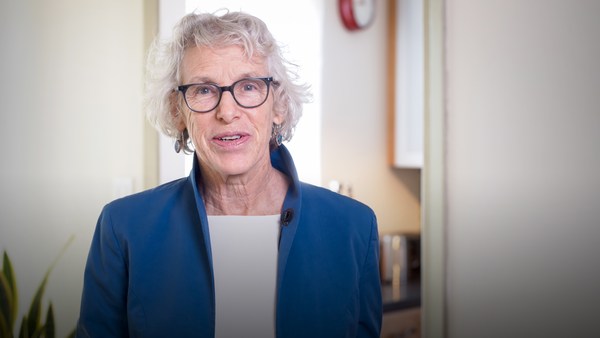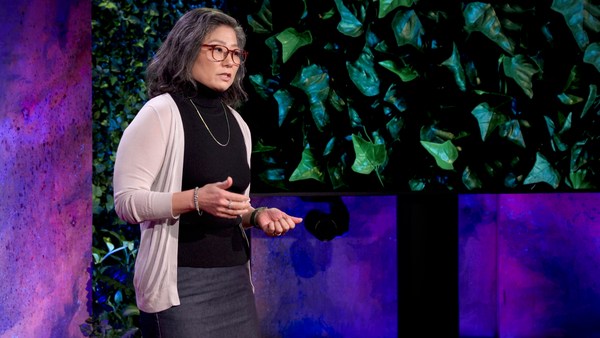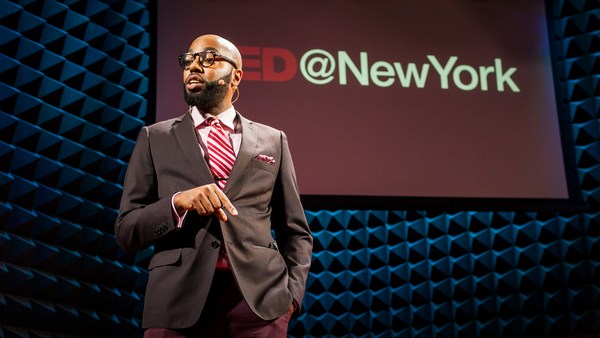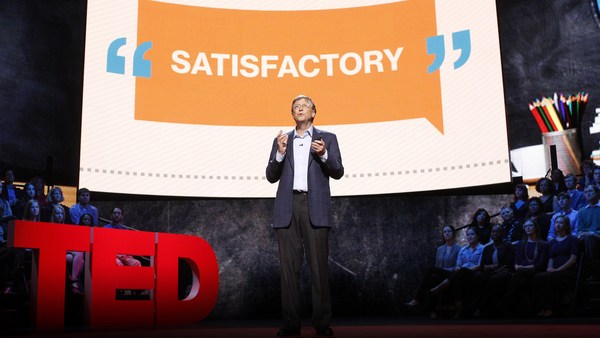My name is Afrika Afeni. Afrika, spelled with a K, and Afeni, after Afeni Shakur, a member of the Black Panther Party and mother of Tupac Shakur.
As you might imagine, I grew up talking about race with my family. My father built bookshelves in the living room of our Brooklyn apartment, and my parents filled those shelves with the books of Black authors whose words we were unfortunately unlikely to encounter outside of our home. I have Alex Haley's autograph. Alex Haley, writer of "Roots," and transcriber of "The Autobiography of Malcolm X." As you can see in the picture, Alex Haley referred to me as his “little sister.” Talking and reading with my family about race was commonplace, and many of the children in my community and students in my schools look just like me.
Even though my parents taught me as much as they could about race, I had not experienced having these conversations with people who were racially different from me. When I went away to a predominantly white college, I was not prepared for the emotions that I experienced when having these conversations.
For example, when another student asked, "Why do you need a Black History Month and why isn't there a White History Month," I found myself feeling very frustrated. Learning to have conversations with people about race across racial difference has been a part of my own deepening learning journey. Though it can be hard, let me encourage you. Having conversations about race is just another hard thing we can learn to do.
I know this because I'm an educator. I have been for over 20 years. I have supported teachers and students around the country to teach and learn in ways that honor the dignity and worth of all people. In this work, it is clear that having conversations about race, particularly with our students, is not a luxury but a necessity. And there's no better place to begin having these conversations than with our students. It's not that adults can't learn to have healthy conversations about race, but the minds of children are more malleable. This is why it's easier to learn to do challenging things like play an instrument, ride a bike, play a sport or to become fluent in a new language when we're young. If we teach children to be comfortable talking about race from the beginning, they will likely have fewer falls and missteps, less baggage, less to unlearn, and biased ideas will be less likely to take hold. We can then imagine a future where we can have productive dialogue and discussions across our differences.
Today, I'm going to share with you four steps you can take to do challenging things, particularly having conversations about race: identify your challenge; find your support network; prepare; and begin.
In my work with educators around the country, when we explore what's challenging about having conversations with students about race, they often say things like, "I don't have the resources to have these conversations." In fact, in EdWeek Research Center's 2020 special report, "Big Ideas for Confronting Racism in Education," though 81 percent of the more than 800 educators surveyed identified as anti-racist educators, only 14 percent of them said that they had both the training and the resources to have these conversations with students. Though this statistic holds true, there are several organizations that provide free instructional resources that support lessons and dialogue with students about race. So access to instructional resources isn't the true challenge. If we're honest with ourselves, it's easier to identify external factors as challenges than it is for us to accept responsibility to influence what is within our locus of control. When I go deeper with educators, they share that the underlying challenge is actually fear. They're afraid of saying the wrong thing or doing harm when talking with students about race. This is understandable, especially considering the history and current manifestations of substantial racial harm in this country. But when we identify the true challenge, not the school or the lack of resources, but fear, is an essential first step.
Once we can name what's at the heart of our challenge, we can begin to overcome it with the next step: finding our support network. Too often attempts to begin having conversations with students about race fail because the fear of making mistakes takes over. When we try to do this work on our own and we face a challenge, say, for example, a student says something or asks a question that we're not prepared to address or answer, in our minds, we can say things like, "Oh, this is uncomfortable. I don't like being uncomfortable. I don't think I want to do this anymore." It's important for us to be surrounded by a community of people who are committed to doing this work.
My colleague Jenna Chandler-Ward, a white woman and cofounder of “Teaching While White,” facilitates racial accountability spaces. She regularly hears from white teachers and students that they are afraid to say the wrong thing. She shares with them that she herself has remained silent to avoid conflict and for fear of making things worse. Jenna says if we are not intentionally seeking people to hold up a mirror and hold us accountable, we'll end up surrounding ourselves with people who affirm our beliefs instead of challenging us to see something more. The more perspectives we have, the broader our understanding will be, especially from people who are at different points of racial identity development. If we are part of a group of people who are doing this work together, we have a place to take that discomfort and work through it. It will help us to remember that we're not alone and help us to feel less isolated. Once we find our support network, we can prepare to have conversations with students about race.
When the student I mentioned earlier asked me why there was a Black History Month and not a White History Month, I experienced a whole range of emotions: confusion, hurt, anger. Similarly, just as I experienced a range of emotions, so will your students and so will you. Expect it so you can be prepared. For this work to be sustainable, it is important that we prepare to navigate these conversations in our learning communities. We will want to intentionally envision how these conversations will look and feel. What emotions might the discussions bring up for our students? What agreements might we need to have in place before we have these discussions? How will you respond to questions, comments and resistance? How will you repair any harm that may be done? You'll want to feel comfortable responding in the moment instead of reacting if the discussion doesn't go the way you hoped.
Once you prepare, you'll be ready to begin. Just as in starting anything new, it can be messy, and you'll make mistakes because you're human. Making mistakes can feel scary, especially because our work is so public. When we push through that fear, however, we can teach students to have conversations about race and help them to unpack their misperceptions. In this work with teachers, it feels like some people are waiting for the perfect moment when a racially conscious version of themselves will appear before they begin engaging in this work. That version of yourself has to be purposely developed and formed, and that moment is now. When we engage in conversations with our students about race, we can help to expand their thinking and equip them with the language and tools that they need to see themselves clearly and to recognize and value the histories, perspectives and experiences of people who are unlike them. They'll be prepared to help us build and sustain a truly just society where we all contribute to the well-being of everyone in our human family.
Remember, having conversations about race is just another hard thing we can learn to do, one courageous step at a time.
Thank you.
(Applause)





